Our last look at erasers got some good feedback, so I thought I’d try four more erasers, though in a much more limited way.
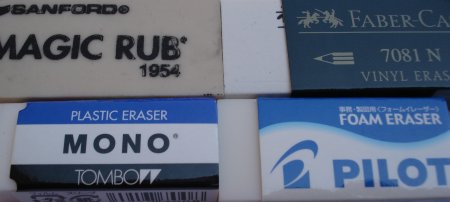
We’ve established that erasers have to be judged in context, and this time we’ll narrow that context – one type of graphite on one type of paper. In particular, our reference pencil, the Staedtler Mars Lumograph 100 in HB, on an 80g/m2 Rhodia pad. Though not the cheapest brands, Staedtler and Rhodia have near-global distribution, so they seemed appropriate choices as references.
The four erasers are the Faber-Castell 7081 N Vinyl Eraser, made in Germany, the Pilot Foam Eraser, made in Japan, the Tombow Mono Plastic eraser, made in Vietnam, and the Sanford Magic Rub 1954, origin unstated.
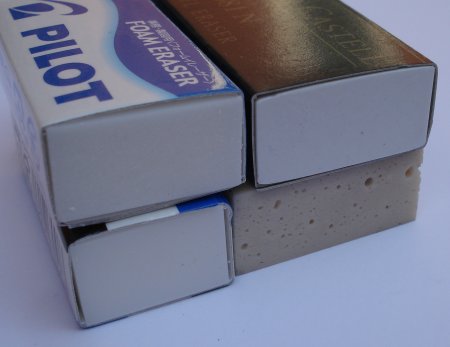
All erasers were purchased new. The Magic Rub came loose, and the others were wrapped in cellophane. The three cellophane wrapped erasers also have paper sleeve holders.
Appearance wise, the Magic rub seems to have many air bubbles, and is a greyish off-white. The other three were variations of white.
On the Rhodia pad, I drew ovals from an Acme template, and shaded in a diamond pattern.
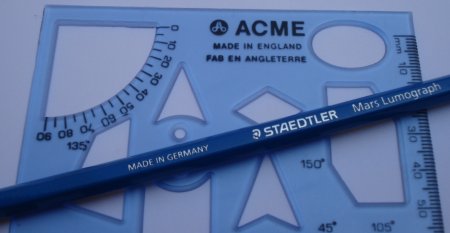
I’ll admit my expectation – I thought these erasers would all be roughly the same. All did well, but there wasn’t any doubt for me about which were best and worst.
At both lines and shaded areas, the Magic Rub was clearly the worst. Also fairly clearly, the Faber-Castell was the next to worst eraser in both tasks.
At lines, the Pilot Foam seemed best, with the Mono close behind. The positions were reversed with shaded areas.
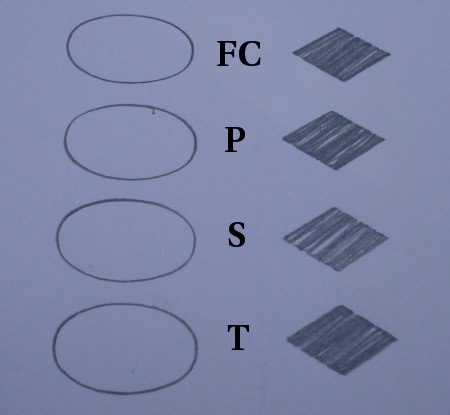
I made some additional marks for an overtime round, and the Mono came out ahead. The differences are subtle, and hard to capture without professional equipment.
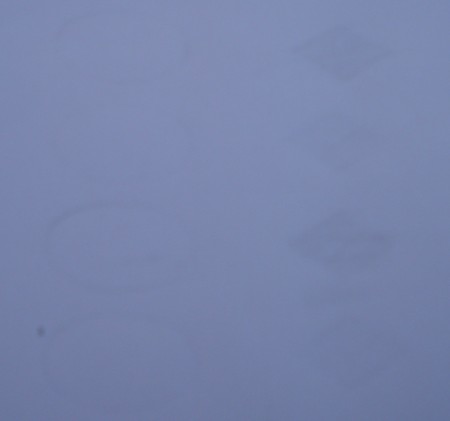
The description at Dick Blick suggests that the Magic Rub isn’t a paper eraser – which might explain the performance.
Further reading: Effects of eraser treatment on paper, American Institute for Conservation, 1982.

I’m just wondering, in what order were the erasers were used? I’m guessing by your comments that the first one was the Faber-Castell, then the Pilot Foam, then Magic Rub, and then lastly the Mono.
By the way, I have a Magic Rub eraser at work. I’ve found that the Magic Rub seems to only work well with lead from mechanical pencils rather than woodcase pencils. The difference between erasing the two types of lead is rather large for some reason. Maybe people who love Magic Rub primarily use mechanical pencils?
Blick also says the Magic Rub is “ivory,” when it’s more of a dirty white. It reacts with plastic and wood and has made a mess of my drawer insert at work (and a similar eraser ruined an old desk).
Pisces, sorry, my chart was not up to snuff. Your guess is correct. I have changed the fourth photo to add some identification. Here is the legend:
The Magic Rub may very well have a bias towards polymer rather than clay leads.
Hi Diane, sorry to hear about the desk. That linked article does mention that the Magic Rub decomposes in heat.
Hmm… A foam eraser?! It could be that i dont know too much about erasers, but ive never heard if one. Weird
the original Tombow Mono is my favourite for 30 years. It’s such amazing that when I was studying architecture, all my schoolmates went to buy the mono erasers that I brought back from Japan. After you’ve tried a mono, then all the other erasers suddenly look unefficient… :-D
It’s not a coincidence that Tombow keeps selling the mono after all these years, with a label design unchanged from the beginning (a very amazing fact in an everchanging world like Japan!).
Thanks for sharing your reminiscence!
Yep I’ve been using monos ever since I was a kid (my mom would get them from Japan). I’m now 32 and they’re still by far the best erasers I’ve ever used.
I have 27 high quality erasers of different brands, and I agree that the Tombow Mono is the best eraser there is.